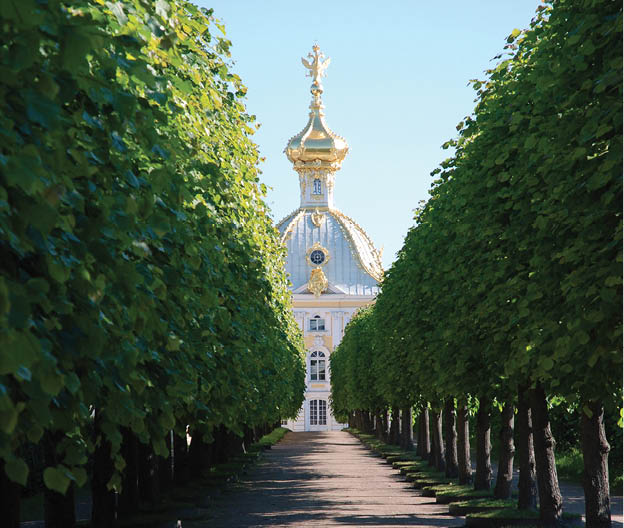Parks & Gardens


A garden path leading to Peterhof’s Grand Palace.
Gardens have been cultivated since antiquity. During the days of the Roman Empire, landscape gardening was highly developed and the formal gardens enjoyed by emperors at their country villas were often terraced and adorned with statuary and fountains. Roman subjects grew herbs and vegetables in simple garden plots, a practise that continued throughout the Middle Ages.

Tsarina Alexandra’s private garden at her summer pavilion on the grounds of the Peterhof estate near St. Petersburg, Russia.
A new type of garden was introduced to Europe with the arrival of the Renaissance and its ideals of harmony and order. As scholars unearthed descriptions of antique Roman villas and gardens, leading artists of the day were commissioned to design elaborate hillside gardens of fountains, waterfalls and reflecting pools, mingled with statuary and topiary, often in geometrical designs.

Royal gardens at Fredensborg Palace near Copenhagen.
In France, the formal garden, based on the principal of imposing order over nature, attained its greatest expression with the Gardens of Versailles. These splendid gardens were widely copied by the other courts of Europe and inspired Russia’s Peter the Great when planning his summer palace and gardens at Peterhof.

The bucolic gardens at Oslo’s royal palace.
The Golden Age of summer palace gardens gradually came to an end in the 18th century as Europe replaced the rigid symmetry of classical gardens with the English garden. Also called the English landscape park, this style was used for public parks and royal estates throughout Europe. The English garden presented an idealized view of nature and usually included an ornamental lake, gently rolling lawns, groves of trees and copies of classical temples.